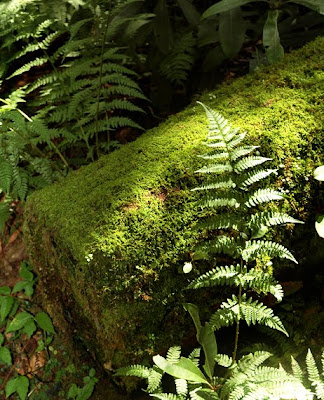
60g Nano Puff pullover as the outer layer, mid winter, 12K feet
"Rainier this summer...then Orizaba, Kili, Aconcagua and Denali!"
That is a common hit list for the aspiring alpinist wanting to get in some altitude.
So it is just as common to answer questions about the gear required to make that dream come true.
I had to walk down tomy gear room andcount the synthetic and down jackets I own specifically to climb in. The count is split 50/50 between Primaloft One andDown in the 850 fill range.
The reason I mention the 50/50 split and not the numbers (besides embarrassing myself as a clothes hog) is to hopefullyshow I am not biased one way or the other for insulation. The only thing I care about is "will it work for my own use".
In the last few years the one item of clothing that has impressed me way beyond any other is a 60g weight Primaloft or Coreloft layer. Most easily identified as theArcteryx Atom Lt or the Patagonia Nano Puff series are 60g. But almost everyone makes one these days.
I first saw full zip and hooded prototype samples from Mtn Hardware (which eventually became the Compressorwith100g layer Primaloft and then changed again). The RAB Xenonis very close at 60g to the original prototype and one of my current lwt.favorites. And then Patagonia Nano Puff pullovers started showing up in places I never thought reasonable. Pictures of one or the other from the top of the Grand Jorasses in winter and summit of Denali early Spring for example. Not as inner layering pieces mind you but as the outer insulated shells. All 60g of that Primaloft One being used to the fullest.
I have Down sweaters that are every bit as capable...as long as you can keep them dry. Asmid weight insulation and yourouter climbinglayer Downdoesn't stand a chanceif you are working hardunless the sun is out and it is cold and dry. When the moon and stars align Down will work fine. The rest of the time given the chance, Primaloft is what I'll bet on. And more importantly if I'll be working hard and know I'll eventually need the insulation I am wearing, Primaloft is a better bet to still be working at full value when it is required.
But lets face it is you can get by with only 60gs of Primaloft it isn't very cold outside. Even mid winter at 12K feet.OR you mustbe working pretty hard!Some time back I was laughed at for saying I sweated and got my insulation wet on lead. Work hard enough on technical ground or go fast enough on easy ground and you'll sweat. How you are able to manage that moisture in your insulation is key.
Soak it out and replace it is an option for approaches. But that won't work on the actual climb generally past your gloves. So having clothingthat will dry out in use and most importantly keep you dry while movingis always going to be important if you are working hard enough.
Back to the layers? As I continued to pay attention to other climbers kit Istarted noticing a few guys using two 60g layers. That is 120g plus the 4 layers of nylon in some even colder places. 100g jackets are common enough as light weight belay jackets. How about layering a 60g jacket and a 100g jacket? The Arcteryx Atom SV and Patagonia Micro Puff are 100g jackets. The Patagonia DAS 170g.
With two lessor layers of insulation but more versatile garments youare now bettering a DAS' insulationwith the two additionallayers of nylon shell.
I find it humorousthat people still want to argue which insulation (down or synthetic) is the better one for the outdoors. For many that might be Down. But anyone who really has to rely on the insulation they climb in will generally bring a synthetic jacket and a down bag. I saw plenty of Down jackets on skiers last winter. None on the climbers in the huts or on the lifts fwiw.
Here is a more varied discussion onthe samebasic topic:
http://cascadeclimbers.com/forum/ubbthreads.php/topics/1055771/1
Last winter I had down and synthetic jackets with me. When I skied I too used Down. It was also clear and sunny every time we skied. When I climbed I used synthetics. Much of the timeit was with several layers intentionally.
There are some good down jackets available. Some of the betterones I have seen were reviewed here. on the blog.
I have a good many choices in the closet and find myself actually using2 layers of 60g. a lot. Or a 60g layer and a 100g layer. When it is really cold I'll add two 60g layers andthe 100g pieceas thethird layer.
Remember the idea is to stay dry, to stay warm. Layers allow you to regulateyour heat output and just as important how much heat you conserve. And how mobile you are as well. Options in the mountain are always a good thing if you don't have to pay a premium for them. If you gain something..like mobility it is a win!
Layering synthetics(or even a combination of down/down or down/syntheticsfor that matter) is just another option to think about. And one way to avoid ever buying that heavy weight belay jacket that you likely will never use andjust as likely never want to carry.

Layered up for the -30 temps and a bivy
4 layers of Synthetic, top down, 60/100/60 and 60.
Two previous posts thatyou might find interesting on down/synthetics
http://coldthistle.blogspot.com//11/daniel-harros-climb-stay-dry-to-stay.html
http://coldthistle.blogspot.com//11/staying-warm-generally-means-staying.html
 Christmas day Slammed the local ice. The 40+ degreees and rain were devastating. The ice delaminated, the locked in tundra turned to mush. All bad things! Well as a last minute plan, Joel Toretti who had planned a trip to VT for the weekend, bagged the idea of heading north for the rainfest. So we made the best of the warm 40+ degrees for some drytool training. Joel, Laura and I met and decided to head to Ohiopyle for some picking and scratching. We first made a trip to the Upper Meadow amphitheater to look at the steeeep cave feature. We managed to get about halfway up one of the lines to the right side. Quite a bit loose rock to be found. Very steep and pumpy, we each took 2 burns on the new line. It still awaits an ascent. After our attempts at Upper Meadow, we went downstream to Lower. We all three tooled around on the various lines, Anger Management, Season Finale and var., we also rigged up the overhang to the left of Season Finale. Which is a short but stout technical route that Joel and I managed to get up. It was Laura's first day out after taking an illness absence for several days. She climbed well with her most impressive showing on the left Var to Season Finale. All in all it was a great day out in unreal "ice" conditions. The 10 day forcast looks very promising and should have the ice lines firmed back up to a climbable state. The annual New Years Climbing Resolution should have ice this year. We'll wait and see.
Christmas day Slammed the local ice. The 40+ degreees and rain were devastating. The ice delaminated, the locked in tundra turned to mush. All bad things! Well as a last minute plan, Joel Toretti who had planned a trip to VT for the weekend, bagged the idea of heading north for the rainfest. So we made the best of the warm 40+ degrees for some drytool training. Joel, Laura and I met and decided to head to Ohiopyle for some picking and scratching. We first made a trip to the Upper Meadow amphitheater to look at the steeeep cave feature. We managed to get about halfway up one of the lines to the right side. Quite a bit loose rock to be found. Very steep and pumpy, we each took 2 burns on the new line. It still awaits an ascent. After our attempts at Upper Meadow, we went downstream to Lower. We all three tooled around on the various lines, Anger Management, Season Finale and var., we also rigged up the overhang to the left of Season Finale. Which is a short but stout technical route that Joel and I managed to get up. It was Laura's first day out after taking an illness absence for several days. She climbed well with her most impressive showing on the left Var to Season Finale. All in all it was a great day out in unreal "ice" conditions. The 10 day forcast looks very promising and should have the ice lines firmed back up to a climbable state. The annual New Years Climbing Resolution should have ice this year. We'll wait and see. 

















 Though not all will agree with this, I believe that in order to honestly say that you areableto cyclea given distance, it has to mean that you are able to do itsuccessfully. In other words, if you managed to complete a long ride, but could not walk the next day as a result, that does not count as "success"!
Though not all will agree with this, I believe that in order to honestly say that you areableto cyclea given distance, it has to mean that you are able to do itsuccessfully. In other words, if you managed to complete a long ride, but could not walk the next day as a result, that does not count as "success"!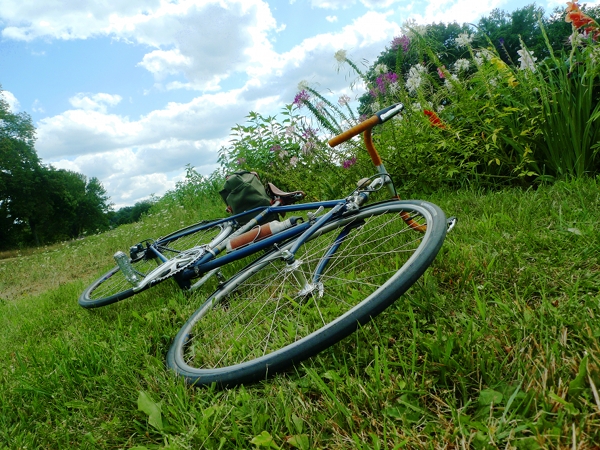 I consider my first half-century (50 mile) ride to have happened this summer - despite having once cycled that distance in Austria some time ago. That earlier trip was a disaster, and I wish somebody had warned me against it. Emboldened by having gone on a handful of short rides, one day I just kept going and going - and didn't stop despite feeling discomfort and pain. Riding a rental bike with a plush vinyl saddle and sub-optimal geometry, I pushed myself well past my limits, ignoring my body's warning signs. And after the ride was over, I could not cycle for over two weeks.
I consider my first half-century (50 mile) ride to have happened this summer - despite having once cycled that distance in Austria some time ago. That earlier trip was a disaster, and I wish somebody had warned me against it. Emboldened by having gone on a handful of short rides, one day I just kept going and going - and didn't stop despite feeling discomfort and pain. Riding a rental bike with a plush vinyl saddle and sub-optimal geometry, I pushed myself well past my limits, ignoring my body's warning signs. And after the ride was over, I could not cycle for over two weeks.
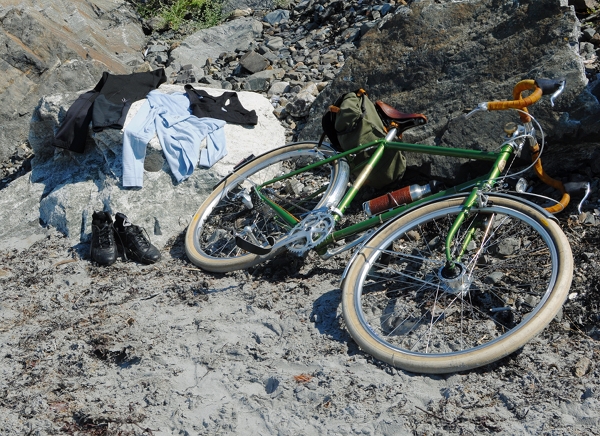 3.Make informed and practical clothing choices.The very same pants that feel great on a 10 mile ride, can make your crotch bleed by mile 50 - as the seams begin to chafe against the delicate skin in that part of the body. By increasing distance gradually, you will be able to spot problematic tendencies before they turn into actual problems and cause damage.
3.Make informed and practical clothing choices.The very same pants that feel great on a 10 mile ride, can make your crotch bleed by mile 50 - as the seams begin to chafe against the delicate skin in that part of the body. By increasing distance gradually, you will be able to spot problematic tendencies before they turn into actual problems and cause damage. 4. Consider terrain. A hilly ride is far more difficult than the same distance covered on flat terrain. You may be perfectly capable of completing a 50 mile ride in Kansas, yet find it impossible in Vermont.
4. Consider terrain. A hilly ride is far more difficult than the same distance covered on flat terrain. You may be perfectly capable of completing a 50 mile ride in Kansas, yet find it impossible in Vermont.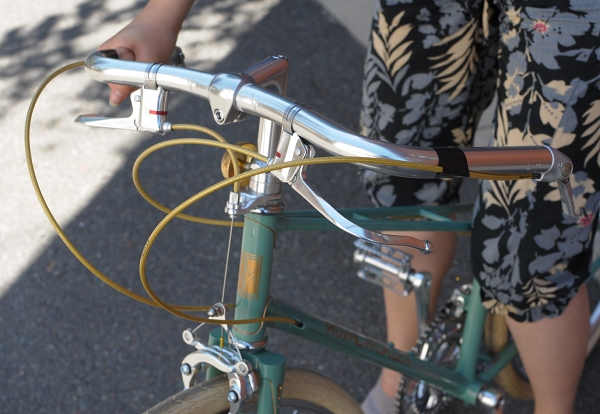 6. Expect to make adjustments to your bike, and possibly replacements. If something does not work for you, admit it and do something about it. This may include replacing components such as your saddle, handlebars, grips, gear shifters, etc. - or even your bicycle itself. Sometimes we read great reviews of things, and yet these things turn out not to be right for us. Get something that works foryou.
6. Expect to make adjustments to your bike, and possibly replacements. If something does not work for you, admit it and do something about it. This may include replacing components such as your saddle, handlebars, grips, gear shifters, etc. - or even your bicycle itself. Sometimes we read great reviews of things, and yet these things turn out not to be right for us. Get something that works foryou. 7. Eat and drink. Cycling can suppress your appetite and trick you into thinking that you are not hungry... until you crash and find yourself completely unable to continue. This weird phenomenon can really sneak up on you. If you are going on a long ride, make it a point to snack when you take water breaks. Some people like energy bars and energy drinks, while others believe them to be unhealthy. I prefer trail mix or chocolate to energy bars. And adding some lemon juice and (a pinch of) salt to your water bottle makes for an effective, all-natural electrolyte replacement drink.
7. Eat and drink. Cycling can suppress your appetite and trick you into thinking that you are not hungry... until you crash and find yourself completely unable to continue. This weird phenomenon can really sneak up on you. If you are going on a long ride, make it a point to snack when you take water breaks. Some people like energy bars and energy drinks, while others believe them to be unhealthy. I prefer trail mix or chocolate to energy bars. And adding some lemon juice and (a pinch of) salt to your water bottle makes for an effective, all-natural electrolyte replacement drink.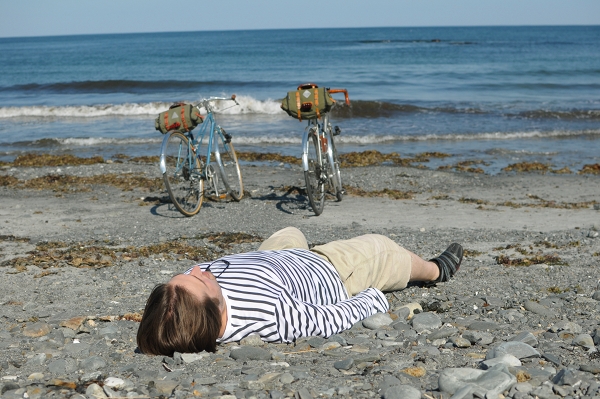 8. Most importantly, listen to your body and go at your own pace. Have realistic expectations and be patient. So you envisioned yourself crossing the Alps this summer, yet you can't manage more than 20 miles on your local rail-trail? So what! Enjoy those 20 miles and keep doing them over and over. One day you will surprise yourself.
8. Most importantly, listen to your body and go at your own pace. Have realistic expectations and be patient. So you envisioned yourself crossing the Alps this summer, yet you can't manage more than 20 miles on your local rail-trail? So what! Enjoy those 20 miles and keep doing them over and over. One day you will surprise yourself.


 In the 05/06 winter, three separate climbing teams reported being caught in significant storms. Two were below Camp Muir, and one was higher on the Ingraham Glacier.
In the 05/06 winter, three separate climbing teams reported being caught in significant storms. Two were below Camp Muir, and one was higher on the Ingraham Glacier. This is a wonderful town. The houses are great with their big wide front porches. The business buildings are old and brick for the most part. And there are flowers everywhere. Such a pretty place to visit!
This is a wonderful town. The houses are great with their big wide front porches. The business buildings are old and brick for the most part. And there are flowers everywhere. Such a pretty place to visit!




 I mentioned previously that Blondine and I drank our way through Cuba. We literally sampled all alcoholic concoction that is being thrust in front of us. Now, we are happy to report that we both like Trinidad’s famous fresh cocktail drink called ‘canchanchara’.
I mentioned previously that Blondine and I drank our way through Cuba. We literally sampled all alcoholic concoction that is being thrust in front of us. Now, we are happy to report that we both like Trinidad’s famous fresh cocktail drink called ‘canchanchara’.

 Inside the La Canchanchara bar... not busy as it was very late in the afternoon. Trinidad is not like Havana. It is not rundown with tourists.
Inside the La Canchanchara bar... not busy as it was very late in the afternoon. Trinidad is not like Havana. It is not rundown with tourists.
 Canchanchara is a very refreshing cocktail drink. You will have to stir the drink until the honey at the bottom mixes with the drink.
Canchanchara is a very refreshing cocktail drink. You will have to stir the drink until the honey at the bottom mixes with the drink. And we got serenaded!
And we got serenaded!
 Jose was such a funny guy! He makes us laugh the whole time.
Jose was such a funny guy! He makes us laugh the whole time.


 Our travel buddies arrived yesterday, but we didn't meet up until later that night. Today they joined us as we made our way back to the National Park. We picked what we thought would be a very short hike, because we were concerned about how Josh would do. Somehow we messed up. We picked a trail that was twice as long as yesterday's hike. Let's just say that we didn't need to worry about Josh one bit. He hiked faster than all of us and didn't seem tired at all. I can't say the same for me. My calves are still on fire!
Our travel buddies arrived yesterday, but we didn't meet up until later that night. Today they joined us as we made our way back to the National Park. We picked what we thought would be a very short hike, because we were concerned about how Josh would do. Somehow we messed up. We picked a trail that was twice as long as yesterday's hike. Let's just say that we didn't need to worry about Josh one bit. He hiked faster than all of us and didn't seem tired at all. I can't say the same for me. My calves are still on fire!


